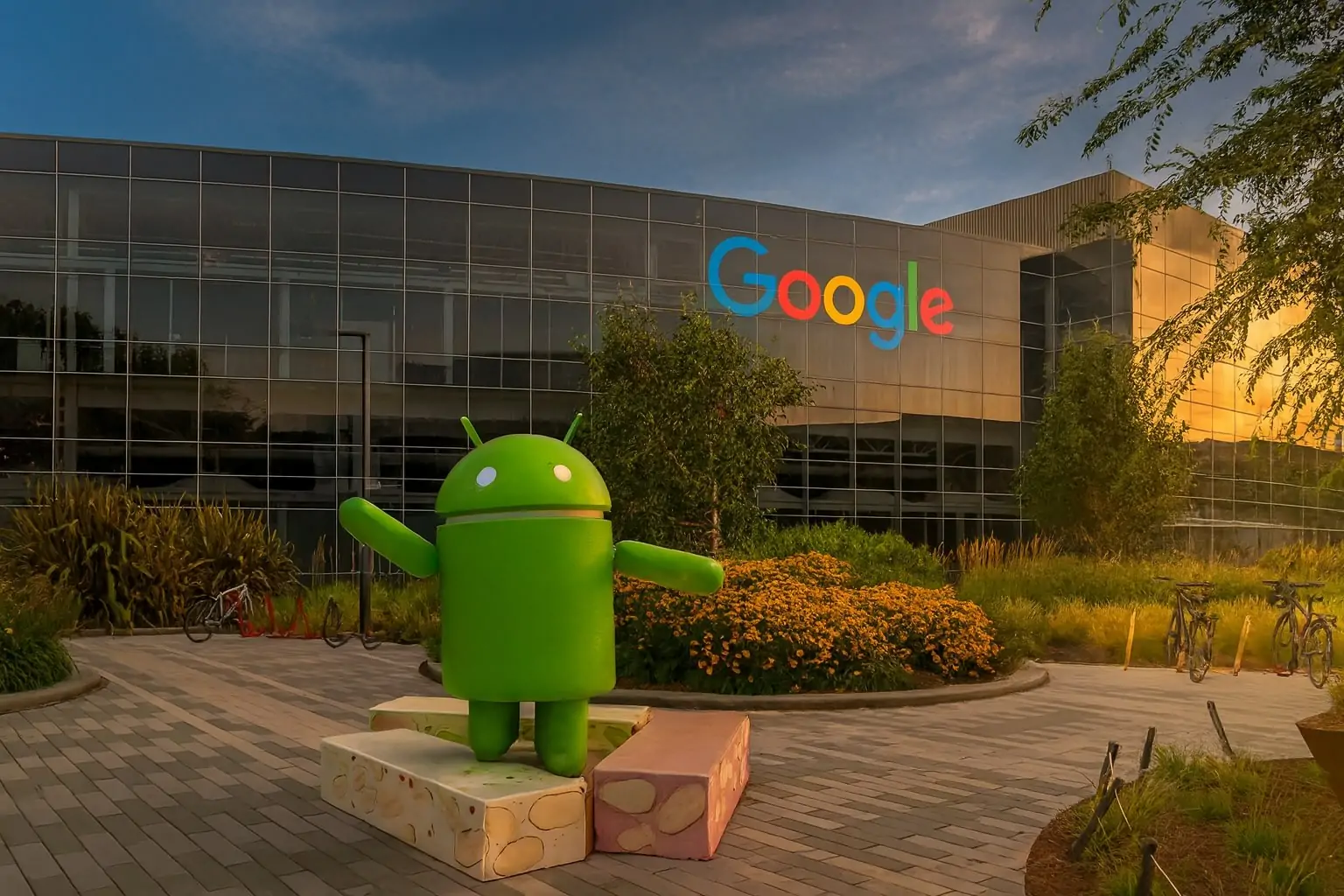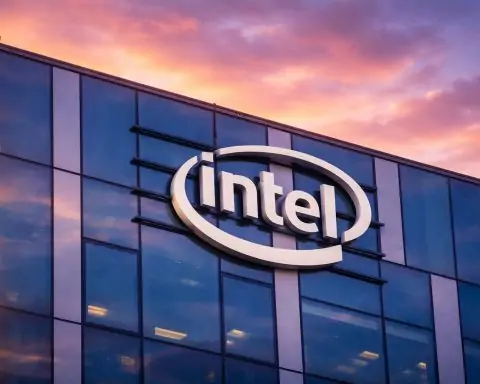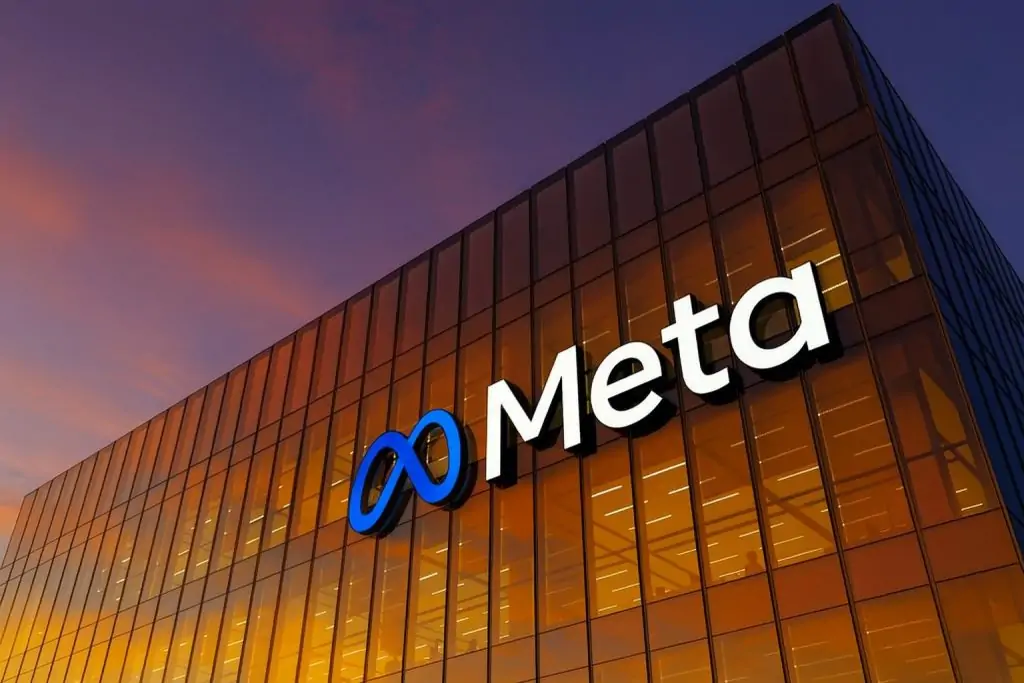Alphabet Stock Rallies on AI Momentum in 2025
Alphabet Inc.’s stock has been on a tear in 2025, with both its Class A (GOOGL) and Class C (GOOG) shares surging to record highs amid a booming tech sector. In mid-September, Google’s market capitalization crossed the $3 trillion milestone as the stock price hit around $249 per share [1]. By November 15, 2025, the share price had climbed further into the high $270s, representing roughly a 60% gain year-over-year [2] and dramatically outperforming the broader market. This rally makes Alphabet one of the best-performing “Magnificent Seven” tech stocks of the year [3]. Investors have been encouraged by easing regulatory fears and enthusiasm for Alphabet’s advances in artificial intelligence (AI), key factors that have driven the stock’s momentum [4].
Despite overall strength, Alphabet’s stock has seen bouts of volatility. Shares jumped over 6% in a single session after the company’s late-October earnings blew past expectations [5]. Conversely, mid-November brought a brief pullback – the stock slid about 2% intraday on news of a fresh European Union probe into Google’s practices [6]. Trading activity also spiked: on November 15, trading volume in GOOG stock ballooned to several times its normal level [7] [8], reflecting intense market interest following major announcements. Overall, however, both GOOGL and GOOG share classes continue to trend near all-time highs, trading within a few dollars of each other as of today’s prices. The minimal gap between the two classes underscores that investor confidence is broad-based across Alphabet’s equity, with little distinction between voting and non-voting shares.
Strong Earnings Fuel Record Revenue Growth
Alphabet’s financial performance in 2025 has underpinned its stock surge, with the latest results showcasing robust growth across Google’s core businesses. In Q3 2025, Alphabet delivered its first-ever $100 billion quarter in revenue [9]. Sales for the quarter hit $102.3 billion, up 16% year-over-year (15% in constant currency) [10] and beating analyst expectations of about $99.9 billion [11]. Earnings also impressed – adjusted earnings per share came in at $3.10, handily topping the $2.26 consensus estimate [12]. Even on a GAAP basis, net income jumped 33% with EPS of $2.87, up from $2.12 a year ago [13] [14]. These better-than-expected earnings sent Alphabet’s stock sharply higher in late October.
Importantly, growth has been broad-based. Google’s core advertising machine has proven resilient: search and other advertising revenues rose 12.6% year-over-year to $74.2 billion in Q3 [15], exceeding forecasts and easing fears that generative AI would cannibalize Google’s ad business [16] [17]. YouTube advertising and subscription streams also contributed to double-digit growth [18]. On the cloud side, Google Cloud revenue surged 34% to $15.16 billion [19] [20], marking one of Alphabet’s fastest-growing segments. This was driven by booming enterprise demand for AI-powered cloud services and data analytics, as companies flock to Google’s AI infrastructure offerings [21] [22]. In fact, Google Cloud’s backlog of contracted business swelled to $155 billion by Q3, leaping by nearly $49 billion in just three months as AI deals rolled in [23] [24].
Alphabet’s profitability remains strong even as it invests aggressively. The company posted a healthy operating margin of 30% last quarter, or nearly 34% when excluding a one-time European Commission fine [25]. Notably, Google Cloud has turned into a profit engine – the cloud unit delivered $3.6 billion in operating income in Q3, up from $1.9 billion a year prior [26]. Operating income overall jumped 22% year-over-year (excluding fines) [27], reflecting both revenue growth and cost discipline after past belt-tightening. Alphabet’s CEO Sundar Pichai hailed the quarter as “terrific,” highlighting that “every major part of our business” saw double-digit growth [28]. Five years ago, quarterly revenue was half this size – now Alphabet’s revenue has essentially doubled since 2020, a testament to the company’s execution and market demand [29].
Looking ahead to Q4 2025, the holiday quarter appears poised for continued gains. Analysts forecast Alphabet’s current quarter revenue around $94 billion, which would mark ~15% growth from a year ago, with earnings per share expected to rise roughly 19% to about $2.57 [30] [31]. Early indications from management remain optimistic, and Alphabet has a history of topping forecasts – it has beaten consensus earnings and revenue estimates in each of the last four quarters [32]. If year-end advertising demand and cloud bookings stay robust, Alphabet is on track to close out 2025 with full-year revenue growth over 15% and EPS growth around 30% [33]. Such sustained double-digit growth in a company of this size underscores why investors have bid up Google’s stock throughout 2025.
Massive AI and Cloud Investments Drive Future Potential
Alphabet’s leadership is firmly leaning into the AI boom, betting big on infrastructure and innovation to secure future growth. The company stunned Wall Street this year by repeatedly raising its capital expenditure plans – now projecting $91–93 billion in capex for 2025 [34] [35]. That’s nearly double the $52.5 billion spent in 2024 [36]. Much of this investment is pouring into new data centers and cutting-edge AI hardware. In fact, Google just announced a $40 billion investment in three new data center campuses in Texas to expand capacity for advanced AI models [37] [38]. This massive build-out, to be completed by 2027, marks Google’s largest-ever investment in a U.S. state and will support the training and deployment of AI systems at scale. It comes alongside a newly unveiled €5.5 billion infrastructure expansion in Germany [39], as Alphabet extends its cloud network globally to meet surging demand.
These moves underscore the fierce competition in AI and cloud computing. Rivals like OpenAI (with partner Microsoft), Meta, and Amazon are also pouring billions into AI-focused data centers [40]. The industry is racing to build out the computing power needed for AI – a modern arms race that Alphabet is determined to lead. CEO Sundar Pichai emphasizes that Google’s “full-stack approach to AI” is driving strong momentum across the company [41]. Google has rapidly rolled out generative AI features in its flagship products: the company launched “AI Overviews” and an “AI Mode” in Google Search globally, enhancing search results with AI summaries [42]. Early reception has been positive, helping reassure investors that Google Search can integrate AI without losing its dominance [43]. According to one senior equity analyst, these AI features “are clearly resonating with users” and easing fears that ChatGPT-style tools might siphon away search traffic [44].
On the enterprise side, Google is leveraging its AI research leadership (via Google DeepMind and Google Brain) into new services. Its next-generation AI model Gemini is reportedly performing at the cutting edge – processing an astonishing 7 billion tokens per minute via API for customers, and already powering applications for hundreds of millions of users [45]. Google Cloud’s Vertex AI platform and custom Tensor Processing Unit (TPU) chips are also gaining traction, helping the company narrow the gap with larger cloud rivals Microsoft Azure and Amazon Web Services [46]. Vertex AI adoption has surged among enterprises seeking to deploy AI models, contributing to Google Cloud’s accelerating growth [47].
While the opportunities in AI are immense, Alphabet’s huge spending hasn’t come without some skepticism. The recent flood of AI investment across Big Tech has drawn parallels to past tech bubbles, with some analysts cautioning that capital outlays may be outpacing near-term returns [48]. If AI adoption by customers doesn’t ramp as quickly as projected, these upfront expenditures could weigh on margins. Alphabet’s executives acknowledge the need to invest “to meet customer demand and capitalize on growing opportunities” [49], but they insist the spending is disciplined. Thus far, investors seem convinced – viewing Alphabet’s AI aggression as necessary to maintain its leadership. The company’s ability to translate AI advancements into new revenue streams (from cloud services to ad products) will be a key factor in its medium-term stock performance. So far, early signs – from ballooning cloud backlogs to improved ad targeting with AI – indicate that Google’s AI bet is beginning to pay off.
Product Innovations and Leadership Moves in 2025
Beyond the headline-grabbing AI projects, Alphabet has kept up a steady cadence of product rollouts and strategic tweaks throughout 2025. On the consumer front, Google introduced its latest Pixel smartphones and other devices, showcasing AI-enhanced features that differentiate its hardware. While hardware remains a small slice of revenue, these products bolster Google’s ecosystem and keep the Android platform competitive. More consequential for investors are Google’s ongoing upgrades to its services: YouTube, for instance, rolled out new monetization tools and AI-driven content moderation, aiming to sustain growth in advertising and subscriptions. Google’s Android app store (Play Store) also saw reforms – not entirely by choice, but as part of legal settlements (more below). These moves, whether voluntary or compelled, reflect Google adapting its products to regulatory and consumer expectations, which in turn helps protect its vast user base and revenue streams.
At the corporate level, Alphabet’s leadership has made notable capital allocation decisions that signal confidence in the company’s trajectory. In a historic shift, Alphabet initiated its first-ever cash dividend program in 2025, a move long awaited by some investors. The Board approved a modest quarterly dividend of $0.21 per share (for all classes) starting in December [50]. Though yielding under 0.3% annually at current prices, the dividend marks a new chapter in sharing Google’s cash generation directly with shareholders. And Alphabet’s shareholder returns don’t stop there – the company remains a prolific buyer of its own stock. Through the first three quarters of 2025, Alphabet repurchased over $40 billion worth of shares [51] as part of its ongoing buyback authorizations. (It had bought back about $46.7 billion by the same point last year [52].) This combination of dividends and aggressive buybacks signals that Alphabet’s leadership is flush with confidence in the long-term value of the business, even as they simultaneously reinvest heavily in growth.
In terms of personnel and structure, Alphabet has seen relatively stable leadership. CEO Sundar Pichai, now several years into leading both Google and parent Alphabet, continues to receive praise for balancing innovation with financial discipline. One notable change has been Alphabet’s workforce strategy: after industry-wide layoffs in 2023, Google has cautiously resumed hiring for critical areas like cloud and AI. The company’s headcount stood around 190,000 at the end of Q3, up roughly 8,000 (4%) from a year prior [53]. This contrasts with peers like Amazon, which were still announcing major layoffs in late 2025 [54]. Alphabet’s ability to maintain focused headcount growth suggests management is carefully adding talent to sustain innovation, without returning to the unchecked expansion of prior years. Overall, investors appear comfortable with Alphabet’s current leadership and strategic direction – a confidence reinforced by external votes of support, such as Warren Buffett’s recent investment (discussed next).
Regulatory and Legal Clouds: Antitrust in Focus
Even as Alphabet’s business thrives, the company remains under intense regulatory and legal scrutiny worldwide. In November 2025, regulatory headlines briefly rattled Google’s stock, reminding investors that legal risks are an ever-present factor for the tech giant. The European Commission opened a new investigation under the Digital Markets Act (DMA) into Google’s treatment of online publishers – specifically examining whether Google unfairly ranks websites that contain sponsored content [55] [56]. EU officials are probing Google’s “site reputation” policies amid concerns the company may be impeding publishers who partner with advertisers. While this case is only in its early stages (the inquiry could take up to a year), the stakes are eye-catching: the DMA allows fines up to 10% of a company’s global revenue – potentially $70+ billion for Alphabet – or even 20% for repeat offenses [57] [58]. Such theoretical penalties spooked some investors when announced, though analysts quickly noted that worst-case fines are highly unlikely. Google can likely resolve the issue by adjusting policies if needed [59]. Still, the overhang of EU antitrust action is a reminder of the regulatory tightrope Alphabet must walk, especially in Europe where it’s often viewed as a monopolist [60].
Indeed, Alphabet has already felt the sting of European regulators this year. In September, the European Commission levied a €3.5 billion fine (~$3.8 billion) against Google for prior competition law infringements [61], which the company accrued as a charge in Q3. And just in November, a German court in Berlin ordered Google to pay €465 million ($542 million) in damages to local price-comparison site Idealo, along with €107 million to another site, over abuse of its market dominance in shopping search [62] [63]. These lawsuits were follow-ons to the EU’s earlier antitrust case on Google Shopping. While Google plans to appeal the German rulings [64], they set a precedent for European businesses seeking compensation from Big Tech. Google argues it has already made changes (since 2017) to treat rival comparison shopping services fairly [65], but the legal battles continue. The message to investors: regulatory pressures in Europe are not abating and could bring added costs or operational changes, even if Google avoids the most draconian outcomes.
In the United States, Alphabet faces its own legal gauntlet. The landmark DOJ antitrust trial over Google’s search engine dominance (centered on deals that made Google the default search on browsers and devices) concluded its testimony in late 2024, and a ruling is anticipated in 2025 or 2026 [66] [67]. Any decision mandating changes to Google’s search distribution or business model could be seismic, though it’s too early to speculate on specifics. Separately, Google was embroiled in an antitrust case over its Google Play app store policies, sparked by Epic Games (maker of Fortnite). In that case, a federal judge ruled that Google did abuse its monopoly in the Android app market and issued an injunction requiring Google to open up the Play Store to competition (e.g. allowing third-party app stores and alternative in-app payment systems) [68] [69]. Google’s attempts to pause or overturn that injunction largely failed – by September 2025 an appeals court refused to further delay the mandated Play Store reforms [70] [71], and Google has been preparing to comply within the coming months [72]. Ultimately, Google and Epic reached a proposed settlement in November 2025 to end their 5-year legal clash, with Google likely agreeing to some concessions on app store fees and distribution (details pending court approval). While these changes could marginally impact Google’s mobile revenues, investors have mostly shrugged – seeing them as manageable adjustments rather than a fundamental threat to Android’s ecosystem. In a positive turn for Alphabet, one major legal fear was eased earlier in 2025 when a judge ruled Google would not be forced to divest or separate its Chrome browser or other units as part of any antitrust remedy [73]. This “no breakup” signal removed a significant overhang and was cited by at least one bank as a reason to raise Alphabet’s price target [74].
All told, Alphabet’s legal and regulatory landscape remains complex. Ongoing antitrust scrutiny – from Brussels to Washington – is likely to continue for the foreseeable future. However, Alphabet’s hefty lobbying efforts (over $6 million spent in 2025 on issues like advertising rules, AI, data privacy, and more) show it’s actively engaging policymakers [75]. Thus far, none of the regulatory actions have derailed Google’s growth. But investors are keeping a close eye on each development, as any material restrictions on Google’s business (or large fines) could temper the stock’s exuberance. For now, Alphabet appears to be navigating these challenges, balancing compliance with defense of its platforms. The stock’s strength in 2025 suggests the market views regulatory risks as a contained cost of doing business – important, but overshadowed by the company’s growth story.
Investor Sentiment and Analyst Reactions
Investor sentiment around Alphabet has been predominantly bullish through 2025, bolstered by the company’s strong execution and AI leadership. A telling vote of confidence came from one of the world’s savviest investors: Warren Buffett’s Berkshire Hathaway revealed a new $4.3 billion stake in Alphabet in November [76]. Berkshire’s portfolio managers accumulated 17.85 million Alphabet shares (likely Class A) by the end of Q3, marking Alphabet as Berkshire’s tenth-largest holding [77] [78]. This surprise move – given Buffett’s historical aversion to most tech stocks – was widely seen as a “seal of approval” on Google’s long-term business [79]. Alphabet’s stock jumped ~1.7% in after-hours trading when the Berkshire news hit, as the market interpreted it as a powerful endorsement [80]. Buffett himself had lamented not buying Google in the past, so his change of heart in 2025 has reinforced optimism among many institutional investors.
At the same time, some savvy investors have taken profits after the stock’s big run. Regulatory filings show that several large hedge funds trimmed their mega-cap tech positions in the third quarter of 2025, including positions in Alphabet. For example, Bridgewater Associates – the world’s largest hedge fund – slashed its Alphabet stake by more than 50% in Q3 [81] [82], even as it also cut back on peers like Amazon and Nvidia. This doesn’t necessarily reflect negativity on Google’s fundamentals; it may simply indicate profit-taking or a rotation into other sectors (Bridgewater redeployed capital into areas like software and payments [83]). Still, it shows that not all big money is unanimously bullish at current valuation levels. The stock’s nearly 50% year-to-date gain by November has led some to argue that a lot of good news is already priced in.
Wall Street analysts, for their part, remain broadly positive on Alphabet’s prospects, though with a dose of valuation caution. The consensus rating on the stock is firmly “Buy/Outperform”, backed by roughly 50 analysts covering Google. Many experts have raised their price targets over the course of 2025 as Alphabet consistently outperformed. In fact, Citigroup cited improving legal clarity and Google’s AI monetization as reasons for raising its target price to $280 per share around September [84]. As the stock has neared that level, some on the Street have gone even higher – recent analyst surveys indicate an average 12-month price target in the low $300s (around $300–$320) for GOOGL, with the most bullish forecasts in the mid-$300s and a few cautious targets in the mid-$200s. This suggests moderate upside potential from current prices, in analysts’ view.
There are also voices urging realism. Investment research firm Zacks, for example, currently ranks Alphabet as a Hold (Zacks Rank #3), noting that after the huge rally the stock may perform in line with the market near-term [85] [86]. Zacks’ analysis points out that Alphabet’s valuation multiples are relatively high compared to peers – it earns a “D” grade on value in their system, indicating the stock trades at a premium [87]. This premium is arguably justified by Alphabet’s growth and dominant franchises, but it means the bar is higher for future outperformance. Some analysts also highlight potential headwinds such as macroeconomic trends – if interest rates stay elevated or an economic downturn hits advertising spending, tech stocks like Google could see volatility. In fact, in November there were market jitters as strong economic data led investors to worry the Federal Reserve might hold rates higher for longer, briefly pressuring high-valuation tech shares [88] [89]. Nonetheless, the prevailing sentiment is that Alphabet remains a core holding for many, given its unparalleled scale in search and attractive growth in cloud and AI.
From a trading perspective, Alphabet’s stock has been relatively liquid and stable. Average daily trading volumes in 2025 have been healthy, and liquidity surged around big news events. As noted, mid-November saw an extraordinary volume spike – one report pegged it as a 700% increase over typical volume in GOOG shares [90] – likely due to the confluence of Buffett’s stake disclosure and other news. Higher volume often coincides with higher volatility, but for Alphabet these spikes have largely been on upside catalysts (earnings beats, investment news) rather than crisis-driven selloffs. The stock’s beta has ticked up somewhat with the tech rally, meaning it can swing more than the market on certain days, yet its sheer market cap and earnings stability lend a degree of resilience. Even when shocks occur – e.g. an unfavorable court ruling or a bad headline – dip-buying has been evident, as investors use any weakness as an entry point into the name. This dynamic reflects the strong confidence in Alphabet’s fundamentals and the robust institutional ownership base supporting the stock.
Alphabet Stock Forecast: Short- and Medium-Term Outlook
What’s next for Google’s stock after such a strong run? In the short term (the next 3–6 months), many analysts anticipate a period of consolidation with potential for modest further gains. Alphabet’s own business outlook is positive heading into early 2026: the all-important holiday quarter and the forthcoming Q4 earnings report should show continued growth in advertising (helped by year-end ad budgets and retail seasonality) and sustained momentum in cloud contracts. If Alphabet meets or exceeds the current forecasts (~15% revenue growth, ~20% EPS growth in Q4) [91] [92], that could provide a catalyst to nudge the stock higher or at least support it at current highs. Investor sentiment remains favorable, boosted by developments like Berkshire’s investment and the company’s shareholder-friendly buybacks and dividend. These factors, combined with the prospect of interest rate cuts in 2026 (should inflation continue to ease), suggest tailwinds for large-cap tech stocks broadly – Alphabet included.
However, near-term upside may be more measured than the past year’s rally. Much of the easy money may have been made from mid-2023 to late 2025, when Alphabet’s valuation expanded on the back of the AI hype cycle and strong earnings surprises. At around a $3.3 trillion market cap, Alphabet now trades at a premium price-to-earnings multiple relative to historical norms [93]. This doesn’t imply an imminent drop, but it means further rapid appreciation likely needs a fresh catalyst – such as a breakthrough AI product, an acceleration in revenue growth, or a resolution of major legal uncertainties. Absent such catalysts, the stock could trade range-bound in the short run. It’s worth noting that volatility could pick up around key events: any hints from management about 2026 guidance, updates on the DOJ antitrust ruling, or macro news affecting tech sentiment (e.g. Fed policy changes) could all sway Alphabet’s share price. Investors should be prepared for occasional swings, as seen recently with regulatory news blips and market-wide rotations.
Looking at the medium-term horizon (the next 1–2 years), the outlook for Alphabet remains fundamentally strong. The company is forecast to continue growing at a healthy clip – current consensus projects Alphabet’s revenue to rise ~14% in 2026, with earnings growth in the high single digits to low double digits (on top of 2025’s jump) [94]. As the huge AI and cloud investments start yielding returns, Alphabet could see new growth drivers bolstering its core advertising juggernaut. For instance, monetizing generative AI features in Google Workspace or YouTube, expanding cloud market share against competitors, and even ventures in “Other Bets” (like Waymo autonomous driving or Verily life sciences) could contribute more meaningfully by 2026–2027. Analysts generally expect Alphabet’s earnings to keep setting new records in coming years, supporting a gradual rise in the stock. Many forecasters see GOOGL shares reaching or exceeding $300+ within the next year, which implies a moderate upside from current levels in percentage terms. Longer-term bulls argue the stock could climb toward $350 or higher over a multi-year period if AI truly unlocks new profit streams.
That said, risks and uncertainties abound that could influence the medium-term trajectory. Regulatory outcomes top the list – for example, if the DOJ or EU were to enforce major remedies (like constraining Google’s default search deals or further fines), it could dampen earnings or limit business practices in ways the market hasn’t fully priced. Competition in AI is another factor: rivals are not standing still, and an unexpected leap by a competitor (say, a disruptive new AI search engine or a decline in Android’s dominance) could pressure Alphabet’s growth or margins. Additionally, macroeconomic swings (a potential recession that hits ad spending, or conversely an economic boom that lifts all boats) will feed into Alphabet’s results and stock valuation.
On balance, the forecast for Alphabet’s stock remains favorable. The company’s unparalleled scale in its core markets and its adaptation to the AI era give it multiple levers to pull for growth. Barring any shock setbacks, Alphabet is poised to remain a leader in the tech sector, and its stock is likely to continue trending upward over the medium term, albeit at a more gradual pace than the past year’s sprint. For investors, Google stock today represents both a cornerstone tech holding and a play on cutting-edge innovation, from cloud computing to AI investments 2025 and beyond. As one portfolio manager noted, the continued strength in Google’s search and ad business has “dispelled the negative sentiment” that AI might upend its dominance [95]. Meanwhile, Alphabet’s strategic moves in AI and cloud are reinforcing the view that the company will thrive in the next chapter of tech.
Bottom Line: Alphabet Inc. enters late 2025 with significant momentum – “Google stock today” is near all-time highs on the back of strong earnings, ambitious AI initiatives, and mostly positive investor sentiment. While regulatory and valuation clouds warrant caution, the consensus is that Alphabet’s outlook remains bright. In the short run, the stock could see choppiness as the market digests its huge gains and awaits further catalysts. But in the longer run, Alphabet’s dominant position in search advertising, its accelerating cloud business, and its all-in bet on AI suggest that “Alphabet stock forecast” skews toward further growth. Investors should stay tuned to upcoming earnings, product developments, and legal resolutions – these will shape the next leg of Google’s market narrative. For now, Alphabet appears well positioned to continue delivering for shareholders, keeping its status as a tech stock update standout and a bellwether for the broader sector heading into 2026.
Sources: Recent financial disclosures and credible news outlets including Reuters, Yahoo Finance, and industry analysts have informed this analysis, with key data and quotes drawn from these sources for accuracy and context [96] [97] [98] [99]. Each development – from GOOGL share news about earnings and AI investments to regulatory actions – has been cross-referenced with these sources to ensure a factual and up-to-date report. Investors should consider these verified details when evaluating Alphabet stock forecast and making portfolio decisions.
References
1. www.quiverquant.com, 2. meyka.com, 3. www.quiverquant.com, 4. www.quiverquant.com, 5. www.reuters.com, 6. finviz.com, 7. meyka.com, 8. meyka.com, 9. www.sec.gov, 10. www.sec.gov, 11. www.reuters.com, 12. www.reuters.com, 13. www.sec.gov, 14. www.sec.gov, 15. www.reuters.com, 16. www.reuters.com, 17. www.reuters.com, 18. www.sec.gov, 19. www.sec.gov, 20. www.reuters.com, 21. www.reuters.com, 22. www.reuters.com, 23. www.reuters.com, 24. www.reuters.com, 25. www.sec.gov, 26. www.sec.gov, 27. www.sec.gov, 28. www.sec.gov, 29. blog.google, 30. finviz.com, 31. finviz.com, 32. finviz.com, 33. finviz.com, 34. www.reuters.com, 35. www.reuters.com, 36. www.reuters.com, 37. www.reuters.com, 38. www.reuters.com, 39. www.reuters.com, 40. www.reuters.com, 41. www.sec.gov, 42. www.sec.gov, 43. www.reuters.com, 44. www.reuters.com, 45. www.sec.gov, 46. www.reuters.com, 47. www.reuters.com, 48. www.reuters.com, 49. www.reuters.com, 50. www.sec.gov, 51. www.sec.gov, 52. www.sec.gov, 53. www.reuters.com, 54. www.reuters.com, 55. finviz.com, 56. finviz.com, 57. finviz.com, 58. finviz.com, 59. finviz.com, 60. finviz.com, 61. www.sec.gov, 62. www.reuters.com, 63. www.reuters.com, 64. www.reuters.com, 65. www.reuters.com, 66. en.wikipedia.org, 67. en.wikipedia.org, 68. www.reuters.com, 69. www.reuters.com, 70. www.reuters.com, 71. www.reuters.com, 72. www.reuters.com, 73. www.quiverquant.com, 74. www.quiverquant.com, 75. www.quiverquant.com, 76. www.reuters.com, 77. www.reuters.com, 78. www.reuters.com, 79. www.reuters.com, 80. www.reuters.com, 81. www.reuters.com, 82. www.reuters.com, 83. www.reuters.com, 84. www.quiverquant.com, 85. finviz.com, 86. finviz.com, 87. finviz.com, 88. www.reuters.com, 89. www.reuters.com, 90. meyka.com, 91. finviz.com, 92. finviz.com, 93. finviz.com, 94. finviz.com, 95. www.reuters.com, 96. www.reuters.com, 97. www.reuters.com, 98. www.quiverquant.com, 99. finviz.com







